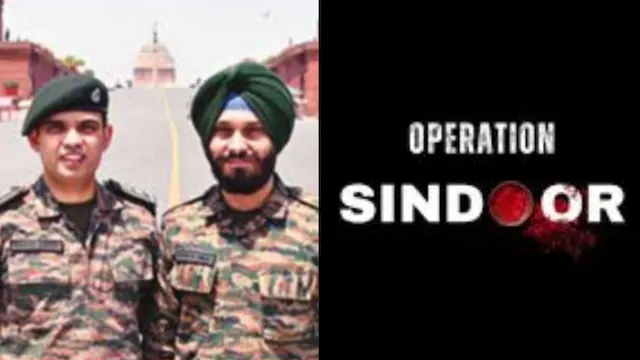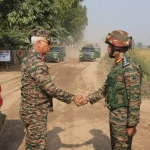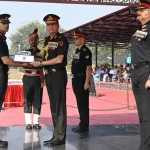The Indian Armed Forces have formally acknowledged Lieutenant Colonel Harsh Gupta and Havildar Surinder Singh as the creators of the now-iconic logo for Operation Sindoor, the military’s recent precision strike campaign launched in response to deadly cross-border terrorism.
The logo, which has captured national attention for its emotionally charged imagery, features a jar of spilled sindoor—vermilion traditionally worn by married Hindu women. The visual metaphor, evoking both cultural identity and collective mourning, is intended to memorialize the victims of the April 22 terror attack in Kashmir that left 26 dead, many of them married Hindu men. Widows such as Ms. Narwal, whose husband was among the victims, have come to symbolize the human cost that the sindoor signifies.
Operation Sindoor was officially launched on May 7, 2025, with Indian forces targeting nine terror hideouts in Pakistan and Pakistan-occupied Kashmir. The operation was briefed to the media at a government press conference in New Delhi, led by Colonel Sofiya Qureshi of the Indian Army and Wing Commander Vyomika Singh of the Indian Air Force, alongside Foreign Secretary Vikram Misri. The decision to have two women officers conduct the briefing—Col Qureshi in Hindi and Wg Cmdr Singh in English—was seen as a deliberate departure from earlier precedents and a message of empowerment and national resolve.
The cultural and political symbolism of the logo has sparked widespread conversation. Sindoor, when wiped or spilled, traditionally marks the transition from married life to widowhood. Its depiction in the logo reflects both the trauma of the April attacks and the government’s resolve to respond with strength. A May 7 report by The New York Times noted the image’s resonance among Hindu nationalist groups, who have been vocal in demanding a strong stance against terrorism.
The operation has also generated political friction. On May 21, BJP MP Sudhanshu Trivedi criticized Congress president Mallikarjun Kharge for calling Operation Sindoor a “small war,” labeling the comment as disrespectful to the armed forces and insensitive to the sentiments of the Indian public. Kharge’s statement, which questioned the government’s handling of U.S. mediation claims and domestic security, prompted a sharp rebuttal from the ruling party, which accused the opposition of undermining national unity.
In the diplomatic arena, the government has engaged in active outreach, sending all-party delegations abroad to counter Pakistan’s narrative and highlight India’s stance on cross-border terrorism. This aligns with a broader strategy of sustained pressure through military, diplomatic, and public messaging channels.
Wing Commander Vyomika Singh, a seasoned helicopter pilot who has served in the Indian Air Force since 2004, emphasized in a recent opinion piece the importance of long-term strategic communication alongside battlefield readiness.
The image accompanying the announcement of the logo creators shows two uniformed soldiers—one wearing a green beret, the other a green turban—standing before a red-brick structure. Their recognition underscores the role of individual service members not only in executing military operations but also in shaping the narrative and legacy that follow.
As Operation Sindoor continues to influence India’s security posture and political landscape, the symbolism of the spilled sindoor remains a powerful reminder of the lives lost and the nation’s enduring commitment to confronting terrorism with resolve and unity.













